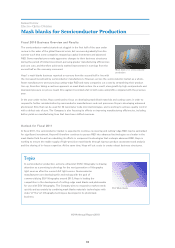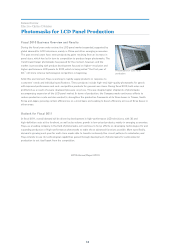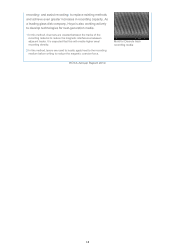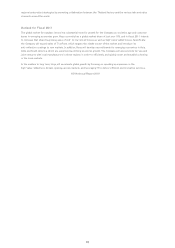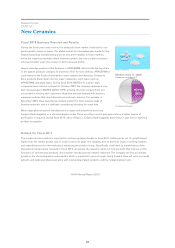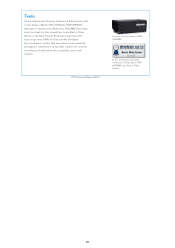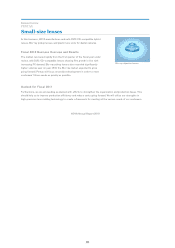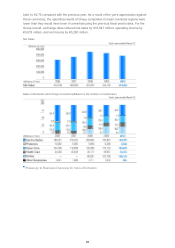Pentax 2010 Annual Report Download - page 21
Download and view the complete annual report
Please find page 21 of the 2010 Pentax annual report below. You can navigate through the pages in the report by either clicking on the pages listed below, or by using the keyword search tool below to find specific information within the annual report.
Intraocular Lenses (IOL)
IOL Global Market size expectation
(company estimate)
Market share in Japan
(company estimate)
iSert™ pre-loaded IOL delivery
system
Business Overview
Health Care Division
Fiscal 2010 Business Overview and Results
The global market for intraocular lenses (IOLs) used in cataract surgery is
expanding as the number of cataract surgery patients increases alongside aging
demographics and increased economic development in emerging economies. The
majority of intraocular lenses used to replace the natural lens in cataract patients
are currently standard, spherical monofocal IOLs. However, in many developed
nations around the world, patients' increasing demand for improved Quality of Life
is creating new markets for aspherical, multifocal, toric and accommodating IOLs.
Currently, the worldwide market is $2.1 billion and is projected to grow to $3.1
billion in the next five years.
Hoya's hydrophobic IOLs, using a precision lathe-cut manufacturing method1,
which results in superior optical quality. Hoya IOLs are available in a novel
pre-loaded insertion system that provides safety, efficiency and predictability for
surgical outcomes. The lenses are currently available in Japan, Europe, Asia and
the United States. In Japan, the Company has already captured 30% of the total
market. During fiscal 2010, performance was driven by sales growth in Japan,
China, Italy, and the United States, allowing the division to achieve year-on-year
growth in revenues.
During the fiscal year under review Hoya began selling the iMics1™ series of
hydrophobic IOLs, which enable surgeons to insert the lens through an incision
size as small as 1.8mm, resulting in superior patient outcomes. Japan sales
commenced in June 2009, and sales were launched in European countries in
January 2010, with the series receiving strong reception in all markets. In August
2009, the Company launched iSert™ pre-loaded IOL delivery system in the United
States, the only small incision system of its kind currently available in the United
States, the world's largest market for IOLs. The pre-loaded system has earned a
positive response from ophthalmological associations and ophthalmologists for
making safer, more efficient cataract surgery possible. Hoya launched iSert™ in
Korea in January 2010, and plans to follow up with launches in India. Both
iMics1™ and iSert™ contribute to ophthalmological medicine by providing not only
high-quality, precision lenses, manufactured using Hoya's outstanding proprietary
optical technologies and materials, but also revolutionary insertion devices that
make surgery more predictable for both patients and doctors.
In addition to developing improved products, Hoya also offers hospitals and clinics
unique supply chain systems to support their business operations. One example of
such support is SAMI™ (Smart Automated Micro-tag Inventory), an inventory
management system that the Company has launched in the United States. SAMI™ uses RFID tags on product packages
to reduce doctors' administrative load, while automating inventory management and ordering processes and increasing
efficiencies.
1 Lathe cutting is a manufacturing process which fabricates lenses precisely one by one from button shaped materials using computer
controlled machine. In HOYA, a cutting-edge line combined with pad polishing and tumble polishing processes is used to achieve sharp
edge and smooth optic surface.
/
20


